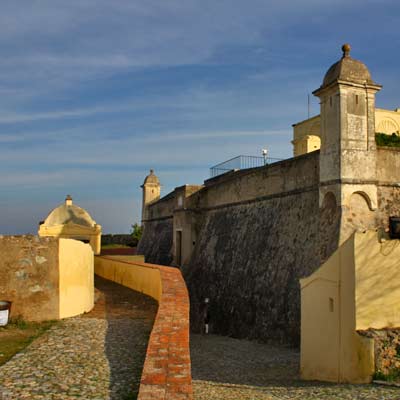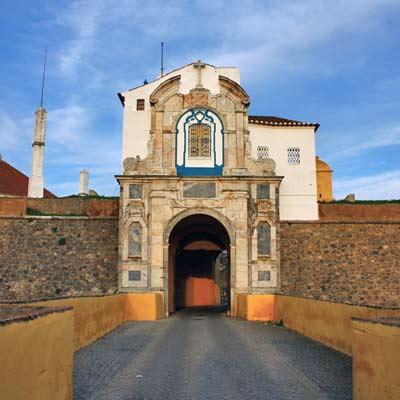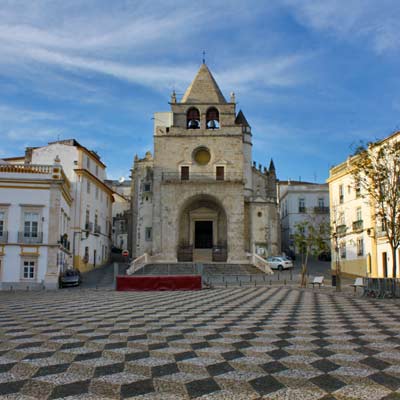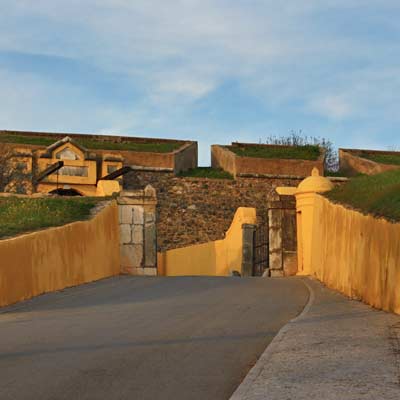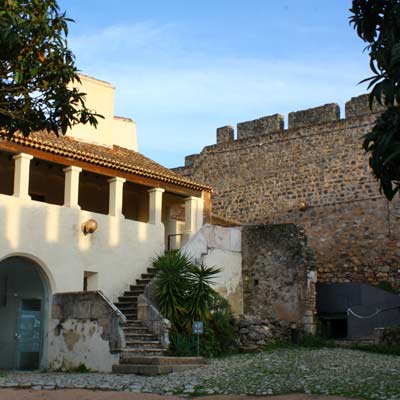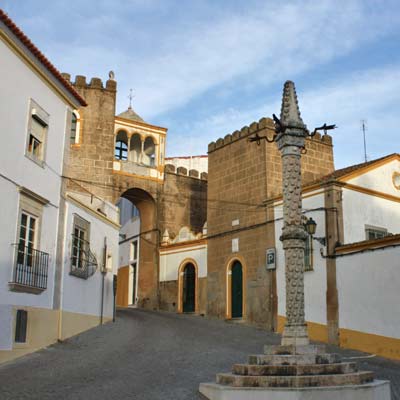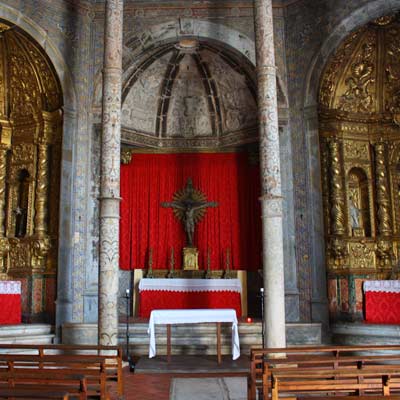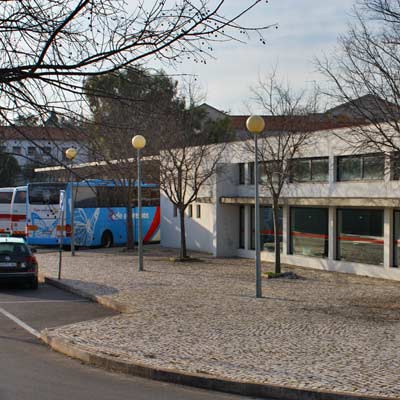MyPortugalHoliday.com
The best independent guide to Central Portugal
MyPortugalHoliday.com
The best independent guide to Central Portugal
Elvas, Portugal: an independent travel guide for 2025
Today, visitors can walk these immense fortifications and explore the two spectacular outlying forts of Nossa Senhora da Graça and Santa Luzia. Dominating the approach to the town is the magnificent Amoreira Aqueduct, a four-tiered architectural marvel built to supply the garrison with water. Within the walls, a delightful maze of cobbled streets and traditional whitewashed houses awaits discovery.
Due to its remote location, Elvas remains one of Portugal’s true hidden gems, bypassed by most tourist routes. Those who make the journey are rewarded with a town of immense character and an unhurried atmosphere that feels a world away from the well-trodden tourist trails
This guide provides everything you need for a perfect visit, helping you to discover one of Portugal's most fascinating and historically important destinations.
Highlights of Elvas, Portugal
Why is Elvas so highly fortified?
Essential for outlasting a protracted siege was a reliable supply of clean water, and this was ensured by the large aqueduct to the south of the town. Later, the two hills overlooking Elvas were also transformed into mighty forts, thus preventing a staging ground from which to fire cannons.
Although an incredibly expensive investment, the multi-directional defences of Elvas managed to fend off three separate Spanish sieges in 1658, 1711 and 1801, and was only defeated by the might of the Napoleonic army in 1808.
During the 1711 siege, local women famously dressed as soldiers to make the garrison appear larger from a distance - this clever ruse helped convince the Spanish forces to retreat, and is still celebrated during the annual Feira de São Mateus festival in September.
Why Visit Elvas?
Elvas is a scenic and characterful town that has barely been altered since the era of grandiose forts and destructive cannons.
All of the town's defences have been lovingly restored and can be fully explored, including the two forts of Santa Luzia and Nossa Senhora da Graça.
Inside the town, you will discover cobbled streets, ancient churches, whitewashed roads and family-run restaurants.
A Day Trip to Elvas
Elvas is a relatively small town, and all of the major sights can be seen within one day of sightseeing. This day trip could be taken as an excursion from Évora or during a tour of the eastern Alentejo region. Elvas is too far from Lisbon to visit as a day trip.
Below is an interactive map showing our suggested one-day tour of Elvas. The tour begins at the bus station to the south of the town and close to the large car parks. The green line is the optional (and challenging) walk up to the Forte de Nossa Senhora da Graça, but this is better saved for the second day in Elvas.
Sights along the suggested walking tour: 1) Santa Luzia fort 2) Olivença gate 3) Fernandina tower 4) Praça da República 5) Senhora da Assunção church (former cathedral) 6) São Domingos church and convent 7) Military museum 8) Saint Vincent gate 9) Senhora da Graça Fort (optional as long uphill walk) 10) São Francisco church 11) British Cemetery 12) Elvas Castle 13) Santa Clara arch and pillory 14) Igreja das Dominicas 15) Elvas market 16) Saint Paul convent 17) Corner gate and Nossa Senhora da Conceição chapel 18) Amoreira aqueduct.
The yellow route is 7.5km and will take about 3-4 hours to complete. The highlights of the route are the Santa Luzia fort (1), the Amoreira aqueduct (18) and the sights around Praça da República (4) and Largo de Santa Clara (13).
How Long to Spend in Elvas?
Elvas can be seen in a single day, but the remoteness of the town and the intense summer heat lend it to spending one night here. For the second day, you could hike up to the Senhora da Graça Fort or explore the town at a more leisurely pace. Elvas provides exceptional value for money when compared to the cities and coastal towns.
The following map shows the best hotels and accommodation in Elvas, if you adjust the dates to your stay it will display current prices and availability. (For the Hotel Rural Monte scroll the map to the north….it is in the middle of rural Portugal!)
Booking.comWhen to Visit Elvas?
Summers in Elvas are incredibly hot, spring and autumn are both warm, and winters are mild. There is no main tourist season for Elvas, as the town experiences a steady flow of visitors throughout the year. The best time of the year to visit is in early spring, with the flowers in bloom and the countryside lush and green from the winter rain.
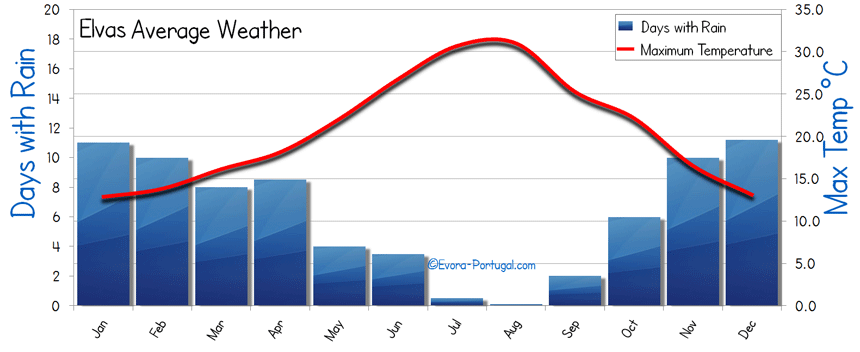
The average weather conditions of Elvas Portugal
When the rest of Portugal is experiencing its major influx of summer tourists, the extreme heat in Elvas tends to deter most visitors, with temperatures often reaching above 30°C/86°F. During the winter, however, central Alentejo is Portugal's driest region and the place to head if there is rain along the western coastlines.
Travel to Elvas
Elvas is less than 15km from the Spanish border on the very eastern edge of the country. Although in a remote region of Portugal, there are still regular bus services to both Lisbon and Évora, operated by Rede Expressos, the intercity bus company of Portugal.
Considerations for Elvas
The main consideration for a visit to Elvas is the intense summer heat, as the temperatures can make all sightseeing virtually impossible during the middle of the day. If you do wish to visit during this time, plan to start your days early and always carry plenty of water. It's also worth noting that the pretty cobbled streets and hills can make the town difficult to explore for less mobile visitors.
Discover more of Portugal with our guides

